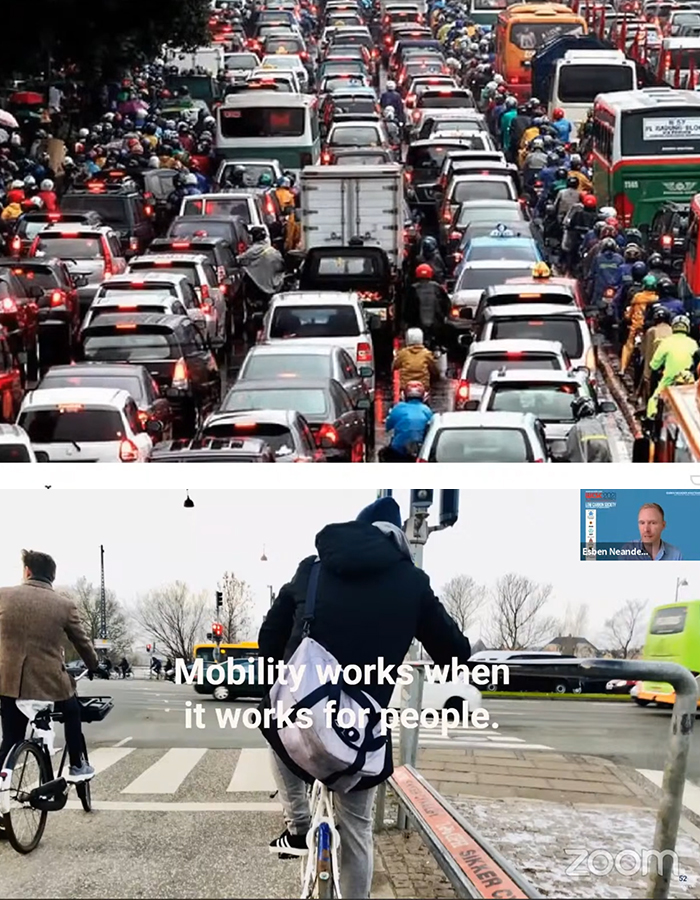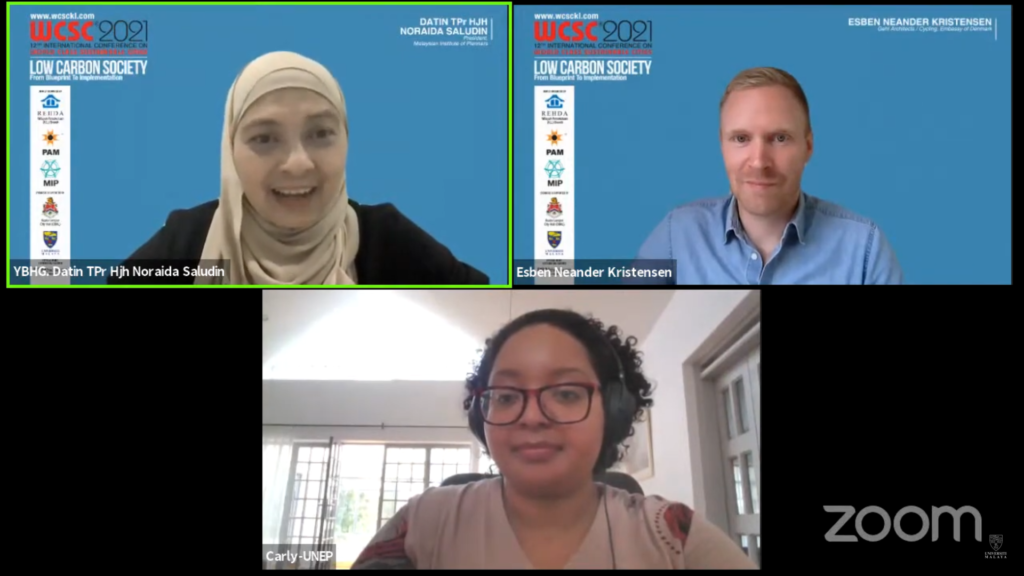2021
The Climate Urgency of Urban Mobility
September 28, 2021
There are many facets of achieving a low carbon society from envisioning to implementation, which is the theme explored in the 12th World Class Sustainable Cities (WCSC) international conference held from 27 – 28 September 2021, hosted by the Kuala Lumpur City Hall and various built environment associations. Panellists of the event sparked conversations to push the envelope on achieving low emission targets, drawing from lived everyday experiences of using city spaces.
Second to the construction sector, the next most impactful avenue of energy consumption in cities is transportation: reconsidering the design of moving and accessing spaces throughout the city. Aptly, the first day of the conference brought Esben Neander Kristensen, Director and Team Lead at Gehl Architects, to speak about mobility as a driver for city transformation. Kristensen highlighted the need to design and re-design for people and life first, “meeting people on the ground” to inform city design strategies.
“Mobility works when it works for people,” said Kristensen, presenting an image of a cyclist leaning against a railing while waiting for a red light. Small solutions such as these are low-cost and easy to implement, but they make a big difference on how people experience space.
Access is also closely tied to economic mobility: when people can move around freely, they can access different opportunities in the city. Human-scale movement is understood as ‘soft mobility’, which can unlock new uses of land and building. Kristensen showed the example of a parking building that was transformed into neighbourhood shops and offices, thus creating foot traffic in the area and increasing its economic opportunity.
A slide read “What’s best for all can be made easiest for each”, summarising the importance of making good and sustainable choices, such as using public transport and cycling, as easy as possible for people. “Human-scale mobility is climate strategy. If we can reduce vehicle emissions and make the way we move around cities much nicer for the planet, then we’re also boosting an inherent level of climate strategy.”
Carly Gilbert-Patrick, Team Leader for Active Mobility at United Nations Environmental Programme (UNEP), further underlined the urgency for transport planning to curb urban emissions. She shared the example of Indonesia’s rapidly growing urban population, where 57 percent of its 277 million inhabitants now live in cities. And within the past 20 years or so, Indonesia’s motorcycle use has increased tenfold, while car use increased by six times higher. This has resulted in extremely congested roads, which spurred the need to build even more roads and highways, further increasing emissions.
The UNEP has worked with non-profits such as the Institute for Transportation and Development Policy (ITDP) to create a National Vision of Non-Motorised Transport Infrastructure for Indonesia. However, without top-down policy, implementation is challenging. Gilbert-Patrick outlined four things that make a difference from idea to realisation, namely: champions and leadership; policies and budgets; listening to citizens; research and data. Cities and countries that have good public systems of transportation need to have strong and responsive systems for these areas.
She ended with a call to action for the audience: “Great examples of public space, walking and cycling—it’s often not the government that made them happen—it’s normally one or two individuals behind the scenes doing the talking to different departments, putting their necks out and diving into doing things differently. There have been almost 500 people on this conference, and hopefully there are a few people listening who could be those people. Don’t leave and just think someone else will sort it out, because it has to be you. Any government departments that are ready to be that champion, we are happy to support.”
Read more Mobility and Transportation stories below:



To read the complete article, get your hardcopy at our online shop/newsstands/major bookstores; subscribe to FuturArc or download the FuturArc App to read the issues!
Previously Published Happening
Contact us at https://www.futurarc.com/contact-us for older articles.


